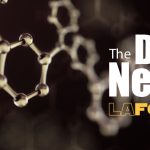
Steve J. Winder, PhD
Professor of Molecular Cell Biology, Director of Postgraduate Teaching, Director of External Relations, Department of Biomedical Science, The University of Sheffield, United Kingdom
In this sixth interview of our series “Portrait of Duchenne,” La Force DMD talks with Steve Winder, Professor of Molecular Cell Biology, Director of Postgraduate Teaching, Director of External Relations, Department of Biomedical Science, The University of Sheffield, United Kingdom. He has been working on aspects of Duchenne muscular dystrophy (DMD) for more than 20 years. He has worked on this project for the last 3 or 4 years.
Why repurpose existing drugs for DMD?
Developing a brand-new drug takes an enormous amount of time, money and effort. Delays and barriers mean that the translation of a promising molecule into an approved drug often takes more than 14 years. It is crucial to advance strategies to reduce this time frame, decrease costs and improve success rates. Drug repurposing or re-positioning is one such strategy. This is what Steve Winder and his team of researchers are exploring; in this case, cancer drugs that affect muscle and which may be useful in the treatment of DMD.
In the video, Professor Steve Winder answers our questions about repurposing existing drugs for DMD.
-
Can you explain the process of drug repurposing?
Ok, so repurposing is taking a drug that’s already been approved for clinical use in one disease and working out whether it’s suitable and effective to use in another disease. A good example would be something like aspirin, which you take for headaches because it’s a painkiller, but these days a lot of people also take the aspirin to prevent heart attacks, because it thins the blood. So, the drug has a primary effect, but it also has what I would call a side effect. And sometimes these side effects can be really useful. So, this is what we are trying to do with a series of drugs that might be useful in treating Duchenne muscular dystrophy. So, in this case, it’s cancer drugs, but they have other effects in the muscle, which may be useful for the treatment of Duchenne muscular dystrophy.
-
What drugs are you repurposing in your current research?
So, these drugs that we’re working with are a group of anti-cancer drugs that are mostly used to treat chronic myeloid leukemia, which are genetically based leukemias that occur reasonably common. And, the advantage of these drugs is, because the disease, as its name says, is chronic myeloid leukemia, the disease is long-lasting, so the drugs are given for long periods of time, So, they’ve been designed to be well-tolerated, or the ones that are in clinical use are well-tolerated and can be given for, you know, 10s of, well, there are examples, certainly, of people being given these drugs for 10s of years. So, from that point of view, if you were going to treat a boy with DMD, it would probably be a life-long treatment, so they need to be well-tolerated, low side effects, and so on. So, these drugs would be particularly suited to that.
-
What effect could this approach have for DMD?
So, these drugs are inhibitors of signalling processes in the muscle that are altered when dystrophin is absent. The drug is not going to reverse the disease. If it were to work 100%, it would stop the disease from getting any worse. That’s the best it could do. But if you started treatment early, then obviously, you would preserve most of the muscles for the boys. And they act on inhibiting signalling pathways that are turned on aberrantly in the muscular dystrophy process. So it’s targeting things directly in the muscle that are altered as a consequence of the loss of dystrophin in the muscle tissue.
-
How long before this type of treatment is available?
We need to satisfy ourselves in the preclinical stages. So this is working with animal models of the disease, such as the MDX mice that have a mutation in the dystrophin gene, the same as boys with Duchenne muscular dystrophy. But the drugs that we’re testing (must) work as we expect them to work and actually have some benefit in the mouse before we then have the confidence to actually go forward and use them in boys with Duchenne muscular dystrophy in a proper clinical trial.
-
How do you envision the future for people with DMD?
In the last five years, even in the last two years, there’s just been an explosion of new potential treatments for Duchenne: some of which people have been working on for a very long time and others which have really just almost come out of nowhere. So, I think, in terms of potential treatments for Duchenne, they, I think, are looking really, really, really positive. I mean, when I originally started work on this, the prospects for treatment seemed completely bleak and no hope 20 years ago, but now, there are all sorts of things, different approaches. I am confident, in the next few years, we’ll see real benefits to lots of boys with Duchenne.
Interesting links
About The University of Sheffield
About drug repurposing for DMD
To receive the next interview in our series “Portrait of Duchenne,” please subscribe to our newsletter.
Acknowledgements
We thank Action Duchenne, who received us with open arms to conduct a series of interviews.

More information about the next event: conference 2017



